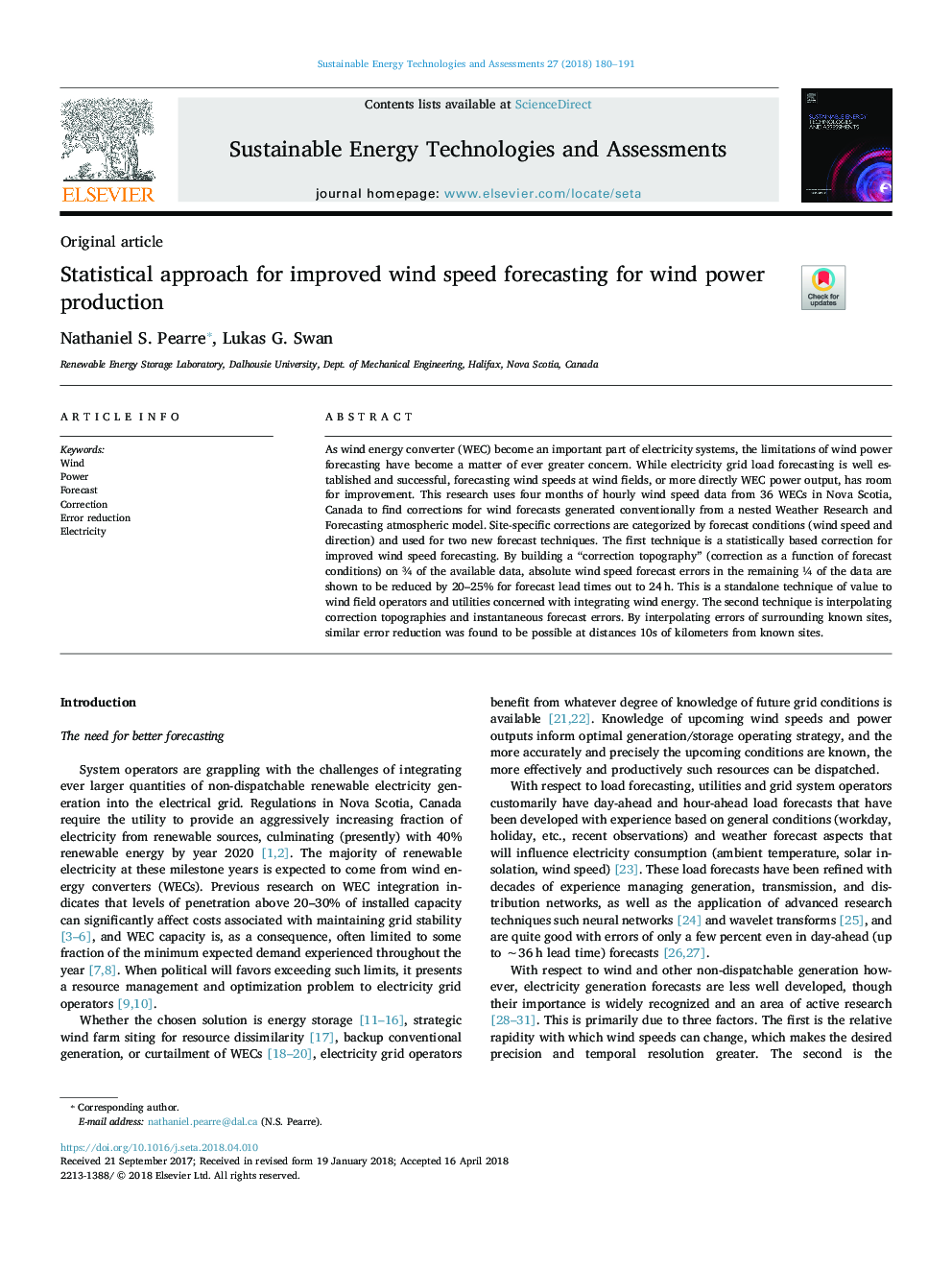| Article ID | Journal | Published Year | Pages | File Type |
|---|---|---|---|---|
| 8122742 | Sustainable Energy Technologies and Assessments | 2018 | 12 Pages |
Abstract
As wind energy converter (WEC) become an important part of electricity systems, the limitations of wind power forecasting have become a matter of ever greater concern. While electricity grid load forecasting is well established and successful, forecasting wind speeds at wind fields, or more directly WEC power output, has room for improvement. This research uses four months of hourly wind speed data from 36 WECs in Nova Scotia, Canada to find corrections for wind forecasts generated conventionally from a nested Weather Research and Forecasting atmospheric model. Site-specific corrections are categorized by forecast conditions (wind speed and direction) and used for two new forecast techniques. The first technique is a statistically based correction for improved wind speed forecasting. By building a “correction topography” (correction as a function of forecast conditions) on ¾ of the available data, absolute wind speed forecast errors in the remaining ¼ of the data are shown to be reduced by 20-25% for forecast lead times out to 24â¯h. This is a standalone technique of value to wind field operators and utilities concerned with integrating wind energy. The second technique is interpolating correction topographies and instantaneous forecast errors. By interpolating errors of surrounding known sites, similar error reduction was found to be possible at distances 10s of kilometers from known sites.
Related Topics
Physical Sciences and Engineering
Energy
Energy Engineering and Power Technology
Authors
Nathaniel S. Pearre, Lukas G. Swan,
